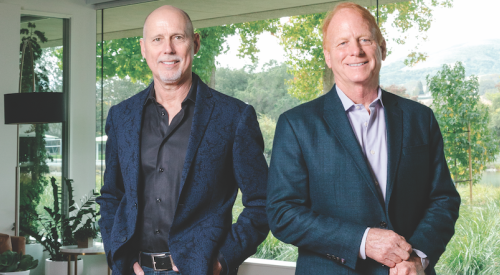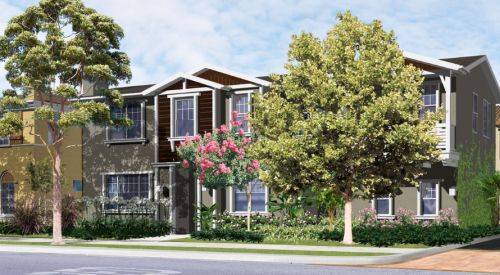Launched in 2008 during the heart of the housing crash, Trumark Homes has achieved double-digit sales growth during each of the last three years largely by sticking to a single principle rule — build only where the jobs are. By leveraging its land development and commercial building groups, Trumark has the unique ability to acquire distressed and deeply discounted commercial real estate in some of California’s hottest job-growth areas and repurposed them for residential development. We recently sat down with Trumark Homes’ co-founder, principal, and CEO Michael Maples to discuss his business strategy.
Professional Builder: You opened your doors for business at a time when many builders were going belly up. Why was the timing right?
MM: We’ve been doing infill land entitlements since 1988 in California’s toughest areas, so we’ve always created land supply. Historically, we sold it off to the nationwide builders once it was all approved. But 17 years ago, we sketched out a business plan for starting a home-building company. Our paradigm was that you could only start a home-building company during a major correction if you really want to be successful, because it gives you good access to leadership and you earn loyalties from the trade contactors that you can’t get during an upturn. And most importantly, you are buying distressed assets that will allow you to ride the appreciation curve as you build out your inventory. So we hired some executives in May 2008 and then found our first project in May 2009.
As a post-bubble company, what makes you different from the average home builder?
I think the difference is, in California, finding the right land. We concentrate in the core areas only, close to the major job sectors. That has given us a strategic advantage. Even during the downturn, where everyone was chasing land and finished lots, our mantra was to only buy where the jobs are going to be. Thus, all the land we bought since we started the company is more valuable than when we purchased it.
We did not have a big machine to feed, so we could be more strategic in our land acquisition. We’ve also been able to very slowly scale the operation side to match the neighborhoods we’re bringing into production. And because we’ve been on the land side for so many years, we are able to set contracts that give us the flexibility on when we have to close the property, which provides us with some timing flexibility on when we come to market.
Are you primarily an infill builder today?
Yes. With a lot of our stuff, we’re tearing down existing buildings or we’re reusing property that is already surrounded by neighbors. In Silicon Valley, for example, we’ve torn down office buildings to create the land for the residential. This allows us to build homes where people want to live. We don’t have a supply problem with housing in the U.S. except where people want to live. We have a shadow demand. There is a huge demand for housing that is going to come because people have delayed the move that they want to make. Millions of people are living with people they don’t want to live with because they are delaying it due to the economy. That creates a shadow demand that is out there.
Is your approach unique?
Few other companies do what we do. It takes a lot of problem solving, dealing with neighbors, and walking through the political process. But it puts us in what we think are the most valuable land spots. By the very nature, it means there is very limited supply that can come on and compete against us. Of the 1,800 lots, I would say probably 1,500 of those we have created in some form or fashion through the finishing of the entitlements or entitlements from scratch.
What about the challenges?
It’s a significant challenge because you have to get through the whole approval process, and it’s usually some form of discretionary approval — they don’t have to give you the change of use. Although, we are fortunate to have a commercial company that is active in the Silicon Valley, so we know what our fallback use of the property is; our use for the property doesn’t just have to be a particular type of housing. We get an idea of what we think will be the best and highest value derived from a certain type of housing, but we usually have some other ideas we can use the land for if there’s a hiccup.
Residential Products Online content is now on probuilder.com! Same great products coverage, now all in one place!













